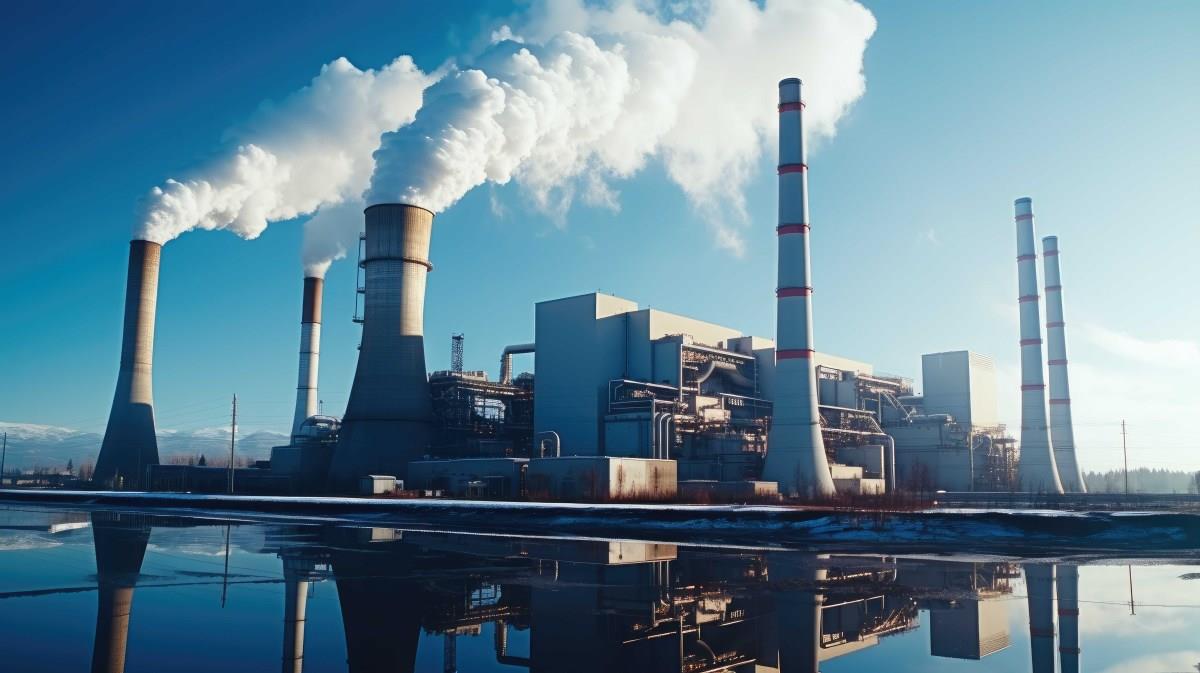
Start Capturing Corrosion At Geothermal Power Plants!
Geothermal power is an exciting source of renewable energy, using steam from hot underground springs to run turbines and generators that produce electricity. This same steam that produces energy is also highly corrosive, containing chemicals
such as hydrogen sulfide (H 2 S) that can attack facility equipment. While it is difficult to completely eliminate corrosion in a geothermal power plant, it can be minimized in
some key areas.
Removing H 2 S from Steam:
The first step to protecting a geothermal power plant is limiting the amount of H 2 S coming in. This can be done by injecting Corrosorber ® Liquid into the water or steam at the wellhead. Corrosorber ® is a concentrated solution of a nitrogen-based heterocyclic compound that helps capture mercaptans, sulfides, and sulfur compounds. Each gallon of Corrosorber ® Liquid will scavenge approximately 3.3 pounds of H 2 S per MMscf (million standard cubic feet) (69.3 mg/L). By doing this at the point of entry, the incoming hot water/steam will be less corrosive to the turbines and overall plant. As the steam cools off and collects in the condenser, Corrosorber ® Liquid should be added again to remove even more H 2 S. Adding S-10 at this time will provide further corrosion protection.
The Role of Corrosion Inhibitors:
After removing excess H 2 S, corrosion inhibitors should be used to interrupt the corrosion reaction on metal surfaces exposed to any remaining corrosives (e.g., oxygen, humidity,
and H 2 S). There are two main types of corrosion inhibitors. Contact corrosion inhibitors protect surfaces to which they are directly applied (e.g., a coating or filming amine), while
Vapor phase Corrosion Inhibitors diffuse throughout an enclosed air space and are attracted to metal surfaces where they form a protective molecular layer. Corrosion inhibitors of both types are especially important for extending the service life of electricals and electronics.
Protecting Geothermal 'Nerve' Centers: Fortunately, control panels, junction boxes, motor control centers, and switchgears are some of the easiest parts of a geothermal power plant to protect. Workers can spray electrical contacts with ElectriCorr TM VpCI ® -239 (which dries to a thin protective layer and can also be used for extra protection inside generator housings) and place VpCI ® -111 Emitters and Corrosorber ® cups inside electrical enclosures. VpCI ® -111 Emitters and Corrosorbers are self-adhesive cups of approximately the same size. VpCI ® -111 Emitters release Vapor phase Corrosion Inhibitors through a breathable membrane, actively protecting up to 11 ft3 (0.31 m3) of space per Emitter. Corrosorber ® cups absorb H 2 S and other corrosive gases, changing color as these gases are trapped to show when the cup needs to be replaced.
Routine and Preventative Maintenance:
Beyond these key steam and electrical/electronic systems, routine and preventative maintenance are also important ways to address corrosion. Painted and unpainted equipment surfaces and structural steel may be coated for an extra layer of protection. VpCI ® -391 is a water-based coating that dries to a non-tacky finish and can be removed if desired. It may be used on external machined surfaces or painted surfaces. EcoShield VpCI ® -386 is a permanent topcoat that can be applied clear directly over painted surfaces or tinted to match facility color schemes and applied directly to the metal. Both water-based coatings contain a mixture of specialty corrosion inhibitors that make them competitive alternatives to industrial grade solvent borne systems. When routine maintenance needs to be done on pumps, valves, or other threaded assemblies, VpCI ® Super Penetrant does an excellent job of loosening rusty fasteners so excess force (which could damage valve stems and packing body bolts) does not need to be used. CorShield ® VpCI ® -369 can be applied upon installation to threaded assemblies that need periodic adjusting (e.g., valve stem bushings).
Facing the Facts of Geothermal Corrosion:
Geothermal power stands ready to be a valuable source of renewable energy. As the industry continues to grow, it will be increasingly important to face the hard facts of
corrosion in a geothermal environment. The solutions mentioned above are an easy place to start, first by reducing corrosives, then by inhibiting the effects of remaining corrosive compounds. Contact Cortec ® for help with corrosion management at your geothermal power plant.

Legal Disclaimer:
MENAFN provides the
information “as is” without warranty of any kind. We do not accept
any responsibility or liability for the accuracy, content, images,
videos, licenses, completeness, legality, or reliability of the information
contained in this article. If you have any complaints or copyright
issues related to this article, kindly contact the provider above.


















Comments
No comment